Lighting goes high-tech to better serve hospitals

The use of light-emitting diode (LED) technology continues to expand throughout hospitals. It offers such benefits as energy savings, easy maintenance, controllability, visual acuity and integration with building automation systems (BAS). In the next stage of its evolution, LED is expected to leverage the Internet of Things (IoT) for smart building solutions.
As a result, hospitals are changing from legacy systems to LED systems that offer varying levels of automation. LED light sources are able to fine-tune both the light levels and types of lighting (i.e., beam spreads, color temperatures and focus) needed in health care facilities.
The cost factor
“As LED technology has evolved, costs have been reduced while a significant number of new features and benefits have been introduced to the market. Control functionality, color tuning, efficacy and lifetime expectancies of LEDs have greatly improved,” says Lee Cush, regional vice president, Cree Inc., Durham, N.C.
Individual diode costs have been trending downward while efficiencies are increasing, according to Frank Gonzales, director, product management, Kenall Manufacturing, Kenosha, Wis. This allows solid-state lighting manufacturers to use fewer LEDs, without sacrificing luminaire performance. Also, current LEDs produce less heat. This, in turn, results in smaller LED thermal management systems, which is another cost savings.
“Hospitals that are looking to retrofit lighting or to incorporate LED lighting into new facilities should be pleased with the longevity and reliability of LED as well as the initial cost and energy savings gained by their use,” Gonzales says.
From 2012 to 2015, the price of LEDs rapidly declined, but a leveling off seems to have occurred since then, says Marc Michels, vice president of software solution sales, Acuity Brands Lighting, Atlanta. “LEDs are now price-competitive with high-intensity discharge and fluorescent solutions in exterior lighting, and within 4 to 6 percent parity in indoor applications. Advances are now being made on the capabilities of using LEDs for other purposes within light fixtures, hence adding value.”
When considering cost, it is important to consider how LED lighting options provide benefits beyond the initial cost of the equipment — including lower power consumption, dimming at no extra cost, lower heat load, reduced maintenance and opportunities for different luminaire designs, according to John Hollander, director of brand development, Hubbell Healthcare Solutions, Greenville, S.C. “With the lifetime operational costs more impactful than the initial one-time capital cost, LED solutions are the best choice.”
Connecting to BAS
More LED systems are being connected to building automation systems. Even lighting systems that are largely independent of BAS may communicate with BAS. When does it make sense to operate lighting equipment through BAS and when does it not?
Jerry Mix, president of Finelite Inc., Union City, Calif., says it depends on the requirements of the hospital. “In some cases, there is a strong desire for one central control interface through the BAS. Others may prefer to manage lighting information through a separate lighting interface to avoid added cost and compatibility challenges.” Others will harvest the data from components being designed in the space, such as monitoring occupancy through a contact closure, and report it to the BAS or apply demand-response events to the lighting system through the BAS via a contact closure, he says.
Connecting a lighting system to BAS is a viable strategy, according to Terry Arbouw, director of business development and product innovation, Hubbell Control Solutions. “We’re seeing an increasing trend toward integrating the entire building or campus. However, there also is a need for localized control, particularly in spaces such as patient areas and surgical suites, where more dynamic control is required.”
Arbouw says hospitals should consider strategies that include both distributed localized control and centralized control rather than depend on one or the other. Centralized control can be effective for public spaces and parking. However, patient care and other spaces that require dynamic lighting benefit from localized control.
“BAS offer a great way to centrally manage and monitor energy and basic scheduling. However, BAS do not make good lighting controllers,” Michels says. “Lighting is complex and often involves more than switching on and off. There is dimming, color, motion sensing and daylight harvesting — all of which lighting control systems can handle better than BAS solutions, which resort to custom programming to perform.”
IoT’s role
The Internet of Things is starting to play an important role in hospital lighting and control systems, according to manufacturers that supply the nation’s hospitals. “The possibilities are endless,” says Greg Galluccio, vice president of product management and engineering, MaxLite, West Caldwell, N.J. “With IoT functionality, data from lighting systems can be gathered, analyzed and fed back to the facilities professional. Security, emergency egress and ingress routing, and room light-level control can be accomplished.”
IoT is rapidly reinventing the paradigm of lighting and its role within architecture, according to Rich Hanlon, chief operating officer of Energy Source LLC, a division of Revolution Lighting Technologies, Stamford, Conn. “While LED lighting has reset the bar for improving efficiency and reducing maintenance costs, its ability to allow for broad control of sensor integration has paved the way for it to play a central role in IoT interconnectivity. LED fixtures, installed with integrated controls, are quickly becoming nodes that go beyond simple lighting needs such as turning lights on and off when a patient leaves or enters a room.”
Hanlon says that LED light fixtures can support internet hot spots, alter light levels based on daylighting, respond to patient care schedules or even advise staff when a patient has been discharged.
Lighting is in a position to deliver more connectivity because it is almost everywhere that people are, often evenly placed across a building and already powered, says Eric Jerger, general manager of lighting systems, Eaton Lighting Division, Peachtree City, Ga. “By using wireless or wired connectivity with sensors installed in lighting fixtures, LED technology can provide a continuous stream of data from the building. This includes monitoring whether people are present, how much natural light is available, the temperature at the fixture and the power consumed by the lighting system.”
Other innovations
New lighting systems incorporate many of these connectivity features. For example, the SmartCast Intelligence Platform from Cree Inc. leverages the IoT to deliver smart building solutions through a combination of hardware, software and services.
“It provides better LED lighting, automated control, data-enabled analytics and an integrated building solution. It also turns data from the LED system into actionable insights that help solve issues that facilities managers face,” Cush says. This includes optimizing productivity by reducing the lighting energy spend by 70 percent and identifying unoccupied rooms.
MaxLite has introduced the IntelliMax networked lighting control system. While not dedicated to the health care market, it can be adapted for use in hospitals, doctors’ offices and private care facilities. It is capable of handling color-tuning system functionality, allowing for the adjustment of light colors to mimic human circadian rhythms. Also, it can automatically adjust lighting levels for exam rooms, surgical areas and patient rooms.
Tunable white-lighting platforms from Acuity Brands Lighting include fixtures that allow warm-to-cool lighting using control solutions. This has met the growing demand for “light dosing” within memory care facilities. “In addition, these fixtures can be connected to appropriate lighting control solutions to implement circadian entrainment,” Michels says.
Finelite Inc. continues to expand the tailored capabilities of its Lines of Light, enabling health care facilities to design lighting as part of the architecture. “We also have a number of products on the horizon that address high-level lighting needs and embrace some of the newer research surrounding tunable white products,” Mix says.
Hubbell recently introduced the NX Distributed Intelligence lighting control platform that scales from a single stand-alone control to a buildingwide network of intelligent luminaires and sensors. “Our research shows that facilities managers want to deploy controls where they need them and within an established budget. To that end, NX connects intelligent devices, such as luminaires, room controllers, panels, occupancy sensors, photocells, wall switches, relays and dimmers,” Arbouw explains.
Osram, Wilmington, Mass., has introduced the Encelium Edge Wireless Light Management System (LMS), which is designed to provide a code-compliant, energy-saving solution that is easy to specify, install and manage, according to Gary Meshberg, LEED AP, LC, sales manager, Osram Digital Systems. The Encelium Edge system can be upgraded via software to the Encelium Networked LMS when advanced features and functionality such as web-accessible system control, BAS integration or advanced reporting features are required.
Eaton has developed the Fifth Light system, an open-standard, digital addressable lighting interface control system that provides real-time health and energy data from individually connected fixtures. By using its web-based application, nurses can control lights (i.e., intensity and on/off) from their stations. “The Fifth Light system is often used in new buildings where modular wiring systems can be used to reduce installation costs,” Jerger notes.
Kenall Manufacturing has developed lighting technology focused on helping hospitals to reduce the spread of health care-associated infections. The company’s Indigo-Clean line provides continuous environmental disinfection via the room’s ambient lighting system to help bolster cleaning protocols. “It uses a safe 405nm wavelength of light, which does not require the room to be unoccupied while in use,” Gonzales says.
Future advances
One of the biggest future innovations will be wayfinding, which will allow hospitals to utilize the IoT to locate people and provide assistance to those navigating large facilities, Meshberg predicts. Energy efficiency and maintenance-cost benefits from LED lighting and control systems will further drive the incorporation of more complex automation and networked capabilities categorized as part of IoT development, Hanlon adds.
Neal Lorenzi is a freelance writer based in Mundelein, Ill.
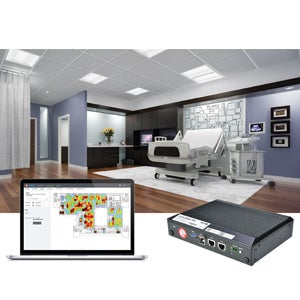
Maxed out
Maxed out // LumaWatt Pro Wireless Connected Lighting System helps hospitals to maximize potential energy savings by incorporating a distributed network of smart LED lighting fixtures with wireless sensing capabilities. Eaton Lighting Division
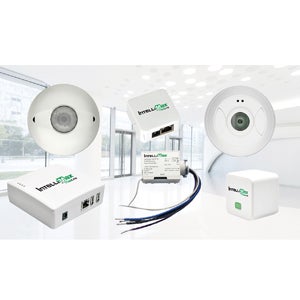
In tune
The IntelliMax networked lighting control system is capable of handling color-tuning system functionality, allowing the adjustment of light colors to mimic human circadian rhythms. MaxLite Inc.

The green way
The Eco Thin Panel can be used to replace 2-foot by 2-foot or 2-foot by 4-foot fluorescent fixtures and can reduce lighting energy use by more than 50 percent. Revolution Lighting Inc.
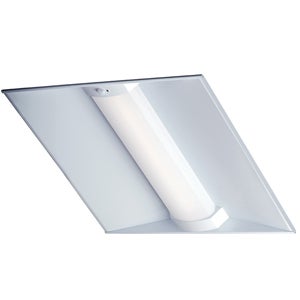
Bright outlook
The ZR Series LED Troffer with SmartCast offers high color quality and increased energy savings, maximizing return on investment. Cree Inc.
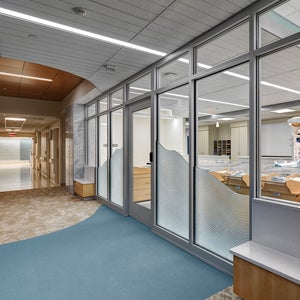
Set the scene
High-performance 4-inch recessed and 4-inch indirect/direct pendant luminaires can provide general ambient illumination to create a calm and healing environment. Finelite Inc.
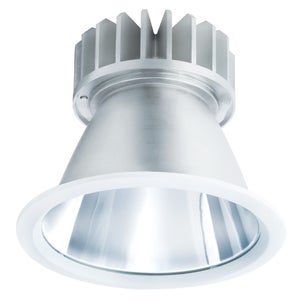
Continuous clean
Indigo-Clean MDLIC6 Sealed Downlight kills C. difficile in patient bathrooms. Kenall Manufacturing
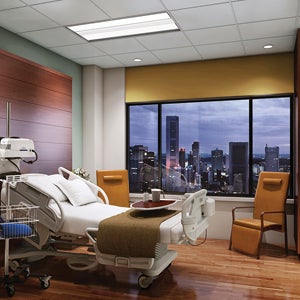
One for all
The MediMode addresses ambient, reading and examination lighting requirements in a patient room with an LED that is architecturally pleasing. Hubbell Healthcare Solutions
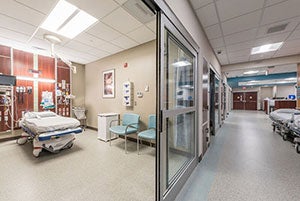
Good lighting
Bryan Medical Center in Lincoln, Neb., uses the ENCELIUM Light Management System in the patient care emergency room.OSRAM




